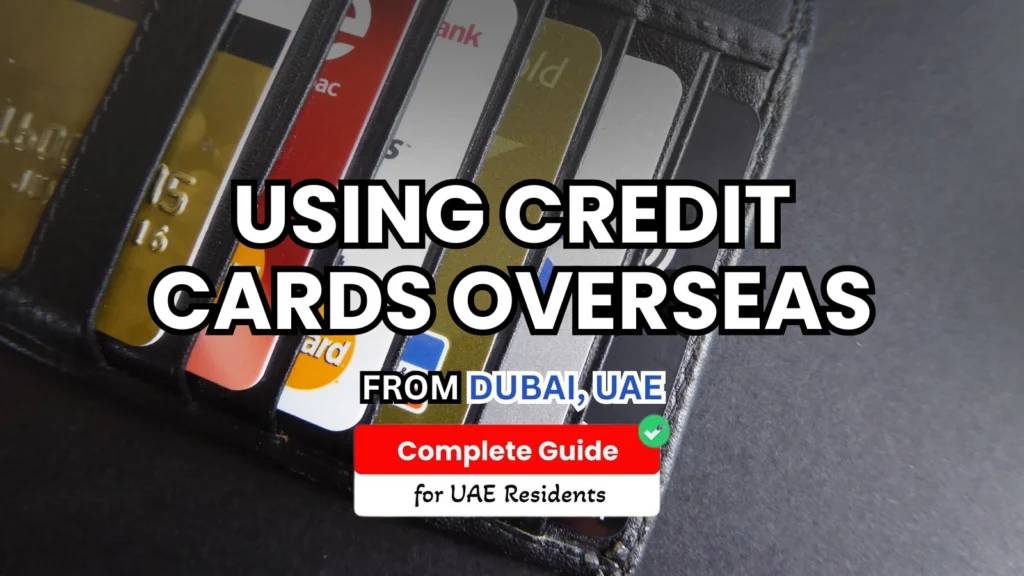
Cash is fine, but cards are cleaner, safer, and easier to track. You tap, you go, and your app remembers the details so you don’t have to. The only “souvenir” you don’t want is a mystery fee on next month’s statement. With a little prep, you can keep the perks and dodge the surprises.
Know your fees before you fly
Most UAE cards add a foreign transaction fee on non-AED purchases. There are three common bites:
-
Currency conversion fee: usually around 2–3% of the amount.
-
ATM fee: on top of the local machine fee if you withdraw cash.
-
Dynamic Currency Conversion (DCC): the cashier offers to charge you in AED “for convenience.” It’s not convenient. It’s expensive.
Do this instead: always choose the local currency on the terminal. Check your bank’s fee table in the app and, if you have choices, take the card with the lowest foreign fees.
Tell your bank you’re traveling
Unusual overseas swipes can trigger a security block. Set a travel notice in your banking app if available. While you’re there, turn on real-time spend alerts. It feels good to get the ping and know a payment cleared, especially at unattended machines, toll booths, and train kiosks.
Carry more than one way to pay
Never rely on a single card. Pack at least two cards from different networks (Visa + Mastercard, for example) and keep them in separate places. Some shops don’t take Amex, some terminals fail for no reason, and sometimes a chip just gives up. Keep a small amount of local cash for tips, markets, or power outages.
Use ATMs like a pro
If you need cash, choose bank-branded ATMs inside branches or malls. Decline any offer to convert to AED. Withdraw one larger amount instead of multiple small ones to reduce fees. Check your bank’s daily withdrawal limit before you travel so you’re not negotiating with a machine at 11 p.m.
Beat dynamic currency conversion
DCC pops up on card machines and ATMs with a friendly question: “Pay in AED?” The answer is no. Paying in the local currency lets your card network handle the rate, which is almost always better. If staff insist, ask them to switch the terminal to local currency or choose another payment method.
Squeeze the perks
Many UAE cards hide brilliant travel benefits in the fine print. Take five minutes to check your card benefits:
-
Airport lounge access for long layovers.
-
Travel insurance for medical, delays, and lost bags.
-
Rewards that boost points on foreign spend.
-
Hotel and car discounts through partner portals.
Add the benefit hotline to your phone. If a flight goes sideways, you’ll want that number handy.
Keep payments secure
A few small habits protect your account:
-
Use contactless where possible; it reduces card skimming risk.
-
Avoid payments on public Wi-Fi; use mobile data or a trusted network.
-
Enable biometric login and transaction alerts in your app.
-
Consider virtual card numbers for online bookings.
-
If a terminal looks tampered with, walk away. Your gut is a good fraud detector.
Understand holds and deposits
Hotels and car rentals often place a pre-authorization hold that ties up part of your limit for several days. That’s normal, but it reduces your available credit. Use a credit card (not a debit card) for these holds, and keep a second card free for daily spend. When you check out or return the car, ask the staff to release the hold immediately.
Tipping and small charges
In some countries, the card machine asks you to add a tip before you tap. In others, tipping is built into service charges. If unsure, ask politely. When you do tip, enter the amount carefully; a stray zero turns a kind gesture into an epic story for your bank’s dispute team.
Keep a back-up plan
Store secure copies of the essentials:
-
Last four digits of each card and the issuer’s emergency number
-
Passport photo page and entry visa (encrypted cloud or password manager)
-
Card-freeze feature bookmarked in your banking app
If a card goes missing, freeze first, call second. Most issuers can rush a replacement or advise a safe workaround.
Smart habits that save money
-
Prepay refundable rates in local currency on official hotel or airline sites.
-
Turn off auto currency conversion in travel apps if they offer it.
-
Set data roaming on your UAE SIM to off if you use an eSIM for data—no accidental roaming fees while paying with mobile wallets.
-
Use wallets (Apple Pay/Google Wallet) when accepted; tokenized payments add a layer of security and often work even if your plastic is at the hotel.
Quick pre-trip checklist
-
Check foreign fees for each card and pick your “travel card.”
-
Set a travel notice and enable instant spend alerts.
-
Add cards to your mobile wallet. Test a small tap before you go.
-
Raise your temporary credit limit if you’ll have hotel/car holds.
-
Pack a second card and keep it in a different bag.
-
Save issuer emergency numbers and your bank’s international collect number.
FAQs in plain English
Pay in AED or local currency? Local currency—always.
Will my UAE card work everywhere? Visa/Mastercard are widely accepted; Amex less so. Have a backup.
Card or cash—what’s cheaper? Card for purchases; cash is costlier once ATM and conversion fees stack up.
What if a payment is declined? Try your backup card, then call your bank. Keep Wi-Fi/data on for OTPs.
Do UAE cards include travel insurance? Many premium cards do, but benefits vary. Download the policy and check activation rules.
Final thoughts
Paying by card overseas should feel effortless. A little homework on fees, a clear plan for ATM use, and a second card in your wallet turn it into exactly that. Choose local currency, keep alerts on, use contactless, and treat pre-auth holds as temporary—not a problem.
